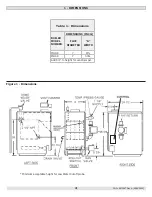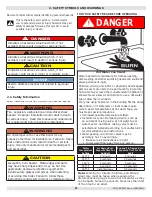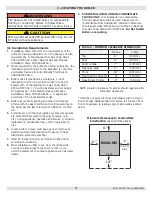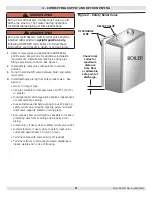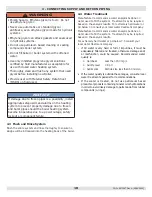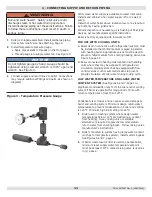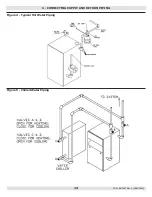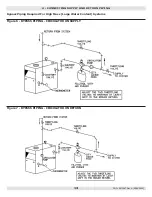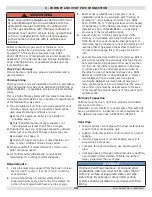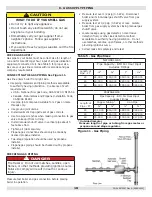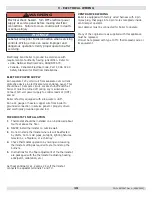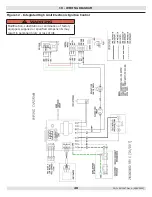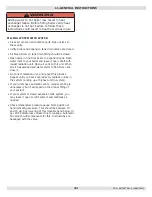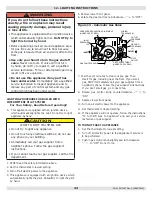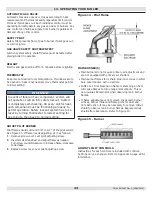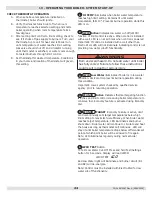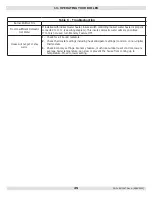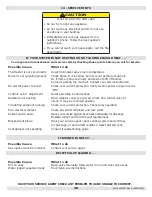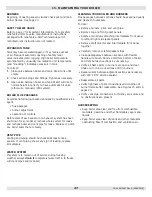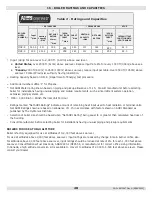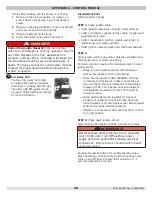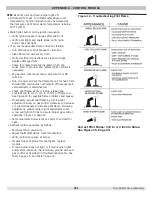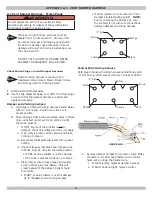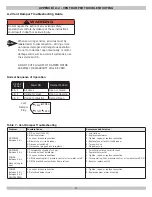
18
8 - GAS SUPPLY PIPING
CAUTION
WHAT TO DO IF YOU SMELL GAS
• Do not try to light any appliance.
• Do not touch any electrical switch; do not use
any phone in your building.
• Immediately call your gas supplier from a
neighbor’s phone. Follow gas supplier’s
instructions.
•
If you cannot reach your gas supplier, call the fire
department.
!
!
CHECK GAS SUPPLY
Gas pipe to your boiler must be correct size for length of
run and for total BTU per hour input of all gas utilization
equipment connected to it. See Table 5 for proper size.
Be sure your gas line complies with local codes and gas
company requirements.
CONNECTING THE GAS PIPING
See Figure 11.
Gas line enters boiler from right side.
• Use piping materials and joining methods acceptable
to authority having jurisdiction. In absence of such
requirements:
• USA - National Fuel gas Code, ANSI Z223.1/NFPA 54
• Canada - Natural Gas and Propane Installation Code,
CAN/CSA B149.1
• Use pipe joint compound suitable for LP gas on male
threads only.
• Use ground joint unions.
• Install sediment trap upstream of gas controls.
• Use two pipe wrenches when making connection to gas
valve to keep it from turning.
•
Install manual shut-off valve in vertical pipe about 5
feet above floor.
• Tighten all joints securely.
• Propane gas connections should only be made by
licensed propane installer.
• Two-stage regulation should be used by propane
installer.
• Propane gas piping should be checked out by propane
installer.
CHECKING GAS PIPING
DANGER
Fire Hazard. Do not use matches, candles, open
flames, or other methods providing ignition source.
Failure to comply will result in death or serious
injury.
!
Pressure test boiler and gas connection before placing
boiler in operation.
• Pressure test over 1/2 psig (3.5 kPa). Disconnect
boiler and its individual gas shutoff valve from gas
supply system.
• Pressure test at 1/2 psig (3.5 kPa) or less. Isolate
boiler from gas supply system by closing manual gas
shutoff valve.
• Locate leakage using gas detector, noncorrosive
detection fluid, or other leak detection method
acceptable to authority having jurisdiction. Do not
use matches, candles, open flames, or other methods
providing ignition source.
• Correct leaks immediately and retest.
NATURAL GAS
Pipe Capacity - BTU Per Hour Input
Includes Fittings
Length of
Pipe - FT
½”
¾”
1”
1¼”
20
92,000
190,000
350,000
625,000
40
63,000
130,000
245,000
445,000
60
50,000
105,000
195,000
365,000
PROPANE GAS
Pipe Capacity - BTU Per Hour Input
Includes Fittings
Length of
Pipe - FT
Copper Tubing *
Iron Pipe
⅝”
¾”
½”
¾”
20
131,000
216,000
189,000
393,000
40
90,000
145,000
129,000
267,000
60
72,000
121,000
103,000
217,000
* Outside diameter
Measure length of pipe or tubing from gas meter or
propane second stage regulator.
Table 5 - Gas Pipe Sizes
Figure 11 - Gas Piping
PN 240013087 Rev. A [09/30/2020]

